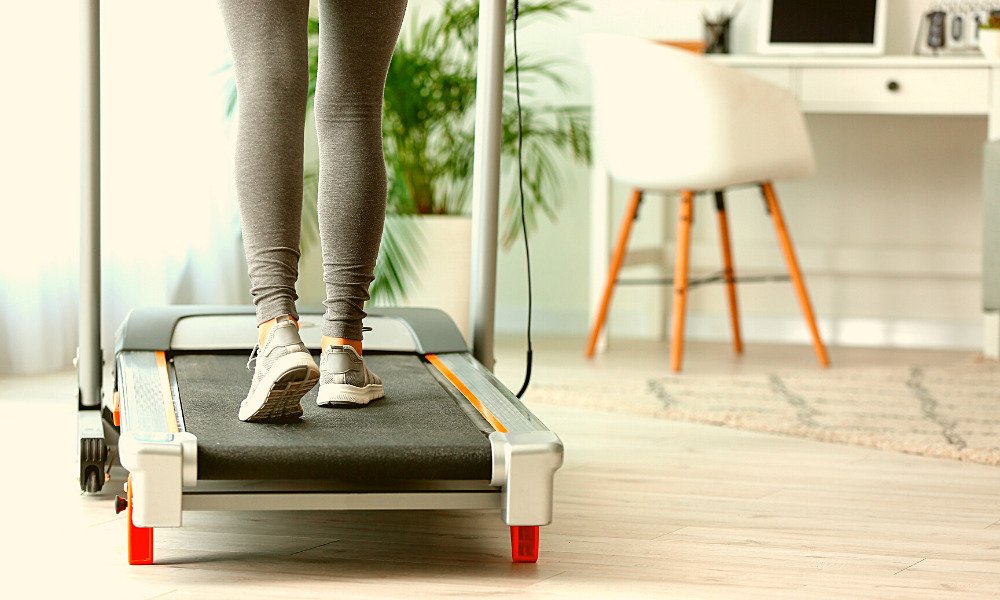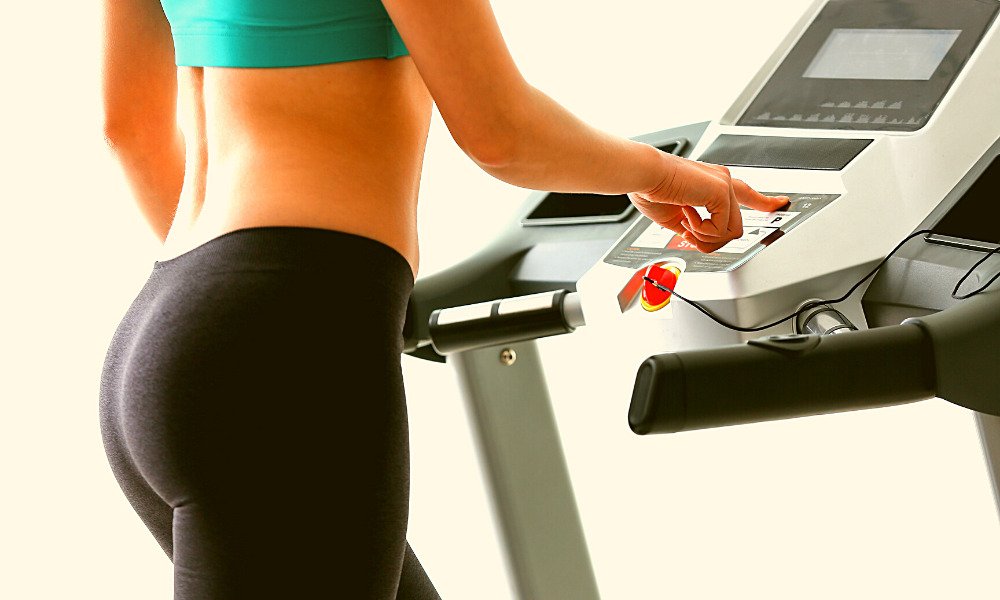While treadmills are excellent pieces of gym equipment that can help with your stamina, cardio capacity, and muscle toning, they certainly aren’t the cheapest piece of gym equipment out there.
Most people compare prices on the one-off treadmill and delivery costs. However, there are other things to consider. You’ll need to think about the costs of maintenance and cleaning (as your treadmill will need to have a thorough clean every few weeks), and, most importantly, the cost of the electricity to power it. Read Here: Top Five Best Treadmills For Seniors – Reviews & Buyers Guide
Electricity is often the highest cost associated with the treadmill. Depending on the quality you purchase, the cost of electricity will probably outweigh the price that you paid for the machine itself by the time you’ve finished with it. In this article we will learn how much electricity does a treadmill use on daily basics and what contributes to the extra energy usage.
Read More:
- Best 3 Peloton Elliptical Reviews
- Best 3 Incline Treadmill Reviews
- Sole F85 Treadmill Reviews
- Top 3 Matrix Treadmill Reviews
- Best Elliptical Machines Under $500: Top 5 Options Reviewed
Do Treadmills Use a Lot of Electricity?

Treadmills are one of the most excessive uses of electricity in the gym world, and depending on the make, model, and extra features, they could end up costing you a lot in energy bills.
Wattage
The average treadmill consumes around 500-700 watts of electricity when it’s brand new every week. You must continue to properly maintain your treadmill as it ages by oiling and cleaning it regularly.
If a treadmill isn’t maintained, they start to lose efficiency and will require 30 percent more power to run them. The better you keep it, the more money you’ll save in the long run.
Read More:
- Best 3 Peloton Elliptical Reviews
- Best 3 Incline Treadmill Reviews
- Sole F85 Treadmill Reviews
- Top 3 Matrix Treadmill Reviews
- Best Elliptical Machines Under $500: Top 5 Options Reviewed
What Contributes to the Extra Energy Usage?
Although there’s an average of 500-700 watts of energy used on a treadmill, there are a few contributing factors that determine if you’re on the higher or lower end of that scale.
- Your Weight
Remember, if you’re using a motorized treadmill, it’s having to use more power to carry you around on the belt as well as just making it turn. Read Here: 10 Best Nordictrack Treadmills
The heavier you are, the more energy it’s going to take to push that belt around. If you’re using a treadmill to lose weight, you may even find that you use marginally less energy when your weight starts to decrease.
- The Amount of Exercise You Do
The average amount of time per day that anyone uses the treadmill is 20-30 minutes. However, if you’re using it for a longer time, it’s likely to use more energy.
You’ll also need to consider how many people in your household are likely to use the treadmill in a single day. If it’s not just for you, then the costs of electricity are bound to rise.
Alternatively, if you only turn it on for short bursts, this could drive up those energy bills too. Did you know that the highest energy usage on any electrical item happens immediately when you turn it on?
If you’re only using your treadmill for a short space of time, then you’re turning it off fully at the outlet, you’ll see your costs start to climb here too.
- The Speed You Run at
The lower end of the 500-watt scale is typically seen by people who use their treadmill for walking only. If you’re going at around 4 mph, then 500 watts is reasonable.
However, if you’re switching it up and jogging or doing some hardcore training on your treadmill, your speed will build up, and so will your energy bill. The faster you go, the more it will cost.
- Features
Unless you’re buying a standard treadmill for casual use, you’re likely to want some extra features to help you work out the best fitness regime and track your progress.
You might have a treadmill that has a heart rate monitor, a distance tracker, a calorie counter, and you’ll want it to be able to lift so that you run on an incline too.
All of these extra features will cause your energy usage to jump higher as it’s the computer inside that you’ll need to run, rather than just the standard motor.
- Your Training Regime
Interval training can be a massive factor in how much electricity your treadmill uses. Much like turning your treadmill on and off at the outlet every time you use it, stopping and starting the high-energy use activities can begin to boost up your energy use.
Interval training is a great way to improve your stamina and increase your cardio capabilities. However, if you’re continually changing from running to walking and from an incline to a flat surface, you’re putting the motor through its paces. Read Here: The Best Treadmill For Heavy Person Reviews
This is completely fine, and most standard treadmills will cope with this – it’s what they’re built for, after all. But you do need to be prepared that interval training may use more energy and, therefore, cost you a little more in electricity.
There have been odd reports of people’s motors burning out after excessive interval training if the runner was heavier than the treadmill recommends.
To be on the safe side, take a look at the maximum recommended weight before purchasing your treadmill and remove 20 lbs. from this (they’re always a little generous). If you’re too heavy, go for a treadmill with more weight capacity.
You don’t want to be faced with a blowout. Not only is it dangerous, but it could blow the fuses in your home and present you with a giant electricity bill too.
Can I Plug My Treadmill into a Regular Outlet?
Yes. Most home gyms operate a treadmill through the standard outlet and have no trouble. The average treadmill will require a standard 120-volt outlet to be able to run efficiently. If your traditional outlets aren’t to this grade, you will need to think of other options or bring in an electrician to help you rewire.
Read More:
- Best 3 Peloton Elliptical Reviews
- Best 3 Incline Treadmill Reviews
- Sole F85 Treadmill Reviews
- Top 3 Matrix Treadmill Reviews
- Best Elliptical Machines Under $500: Top 5 Options Reviewed
Other Things to Consider

So, you’ve set up your perfect home gym, and you’ve left a great big space in one corner to set down your treadmill. But when it comes to the delivery, you notice that the power cord isn’t that long and you haven’t thought about placing it next to an outlet. Disaster.
While most people would think to just plug in an extension cord, this could have safety implications, especially if it becomes a trip hazard or if your power socket becomes overloaded, and it could limit the capability of your treadmill as the electric current needs to travel further to reach the destination.
Always consider where your treadmill is going to live before the purchase and ensure that your chosen position is right next to a power outlet. Read Here: Top 10 Best Treadmills Under $1000
Horsepower
Another massive factor to take into consideration when thinking about your energy costs is your treadmill’s horsepower. This is determined by how large and powerful your motor is. The average motor size in a home gym standard treadmill is 2.5 hp; however, they can range from 2 hp to 4 hp depending on make and model.
Generally, a 2 hp treadmill is best for people who only intend to walk on their treadmill. For this reason, you’ll rarely see these weaker treadmills in professional gyms. 2.5-3 hp are acceptable for home use and can pretty much do everything that you’ll ever need it to do.
3-4 hp are treadmills made specifically for hardcore training or excessive use. You’ll generally find these in a professional gym, and they’ll actually seem quite a lot larger than the standard home-use versions. You won’t be able to get a 4 hp treadmill that folds up, so this does tend to put a lot of domestic users off.
Things to Consider for Higher Horsepower
- The more you use your treadmill, the higher you’ll need the horsepower to be to allow it to maintain its effectiveness. However, the higher your horsepower, the more electricity it will take to power it efficiently. So, you can expect that, even if you purchase a standard wattage treadmill at around 700 watts, if you’ve got a higher spec version to allow for more vigorous use, it’s still likely to boost your electricity usage because the motor has to work a little harder.
- Higher horsepower means that the motor is larger and has to work harder to meet your needs. This may also mean that the motor is much louder than a 2 or 2.5 hp motor. You’ll need to consider where you’re going to put your treadmill in your home if you’re using a treadmill with more power. You don’t want to upset the neighbors.
- While wattage doesn’t make too much of a difference on the overall purchase price, horsepower really does boost up that cost. You’ll typically find that 2 or 2.5 hp motors are much cheaper than 4 hp motors. However, if you’re looking to build up your fitness to a more professional level or intend to have your treadmill for years and maintain it properly, the 4 hp (or 3.5) may be worth that extra one-off cost to get the longer-lasting product.
Read More:
- Best 3 Peloton Elliptical Reviews
- Best 3 Incline Treadmill Reviews
- Sole F85 Treadmill Reviews
- Top 3 Matrix Treadmill Reviews
- Best Elliptical Machines Under $500: Top 5 Options Reviewed
How Much Electricity Does a Treadmill Use in an Hour?
You can expect to use around 200 watts per hour of energy for a brand-new treadmill, which is basically your whole workout. Typically, people use up to 28,000 watts of energy per day just to keep up their everyday lifestyle, so if you look at it like that, it’s a pretty huge chunk. Read Here: Top 10 Best Treadmills Under $1000
How Much does it Cost to Run a Treadmill for an Hour in the US?
Calculating your energy use can be pretty tricky. Unless you have an incredibly structured workout routine where you know exactly how many minutes you’ll be running, exactly how many you’ll be walking, and exactly what incline you’ll be using, it can vary significantly.
However, let’s say you run for 1 hour per day for six days throughout the week. You give yourself Sundays off. That means you’re spending around 24 hours per month just on your treadmill.
You’ll need to multiply the number of hours you spend each month by the wattage that your treadmill is categorized by. Let’s say your treadmill is running at an average of 600 watts.
600 x 24 = 14,400 watts.
Generally, energy prices are based on kilowatts used. 1 kilowatt = 1000 watts. So, in this case, you’re using 14.4 kilowatts per month. In the US, a kilowatt of energy is typically priced at around 12 cents (although this can vary based on your energy supplier).
This means that you’re spending around $1.78 on using your treadmill per month; that’s $0.074 per hour.
How Much does it Cost to Run a Treadmill for an Hour in the UK?
In the UK, the cost of energy is slightly higher, so running a treadmill will naturally cost you a little more. UK energy suppliers usually charge around £0.17 per kilowatt, so that’s £2.44 for running the same distance and approximately £0.10 per hour.
If you’re still struggling to work out the costings around your treadmill use, you can purchase a power meter specifically to track its use while you’re running, or alternatively, take a quick glance at your smart meter before you go for the run and then again afterward. It’s not 100% accurate, but it’ll give you an idea of how much your workout just cost you.
Looking for an Eco-Friendly and Cheaper Treadmill Option?

Manual treadmills are becoming more and more popular to help with energy-saving. A manual treadmill is essentially a smaller treadmill that runs without a motor. The belt is powered simply by your own feet and your momentum.
It does have the downside that you don’t need to set a pace, so your fitness will likely take longer to develop. You’ll also need to use a different device to track your heart rate, calorie count, and distance.
However, it does have the bonus that it’s just like jogging out there on the street, and it doesn’t cost you anything at all in electricity. Read Here: Top Five Best Treadmills For Seniors – Reviews & Buyers Guide
Read More:
- Best 3 Peloton Elliptical Reviews
- Best 3 Incline Treadmill Reviews
- Sole F85 Treadmill Reviews
- Top 3 Matrix Treadmill Reviews
- Best Elliptical Machines Under $500: Top 5 Options Reviewed
Summary
Purchasing a treadmill for your own use in your home is an excellent idea to help you stay fit and healthy. But make sure you’ve considered the cost of running your treadmill, where you’re going to put it, and how often you’re going to use it. These are things that many people forget about when they make an impulse, get-fit-quick buy.
